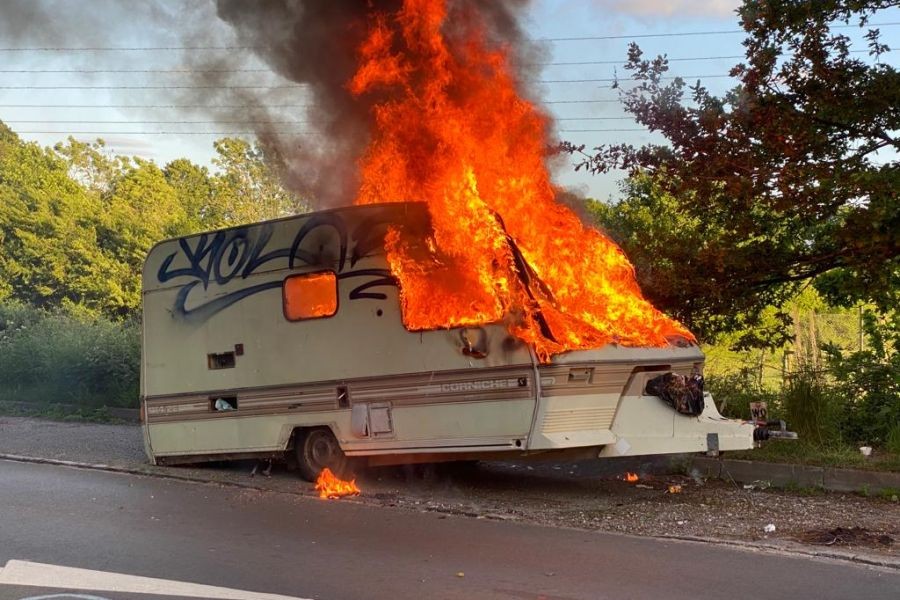🔎 Introduction:
In a country known for its natural beauty and egalitarian values, a disturbing truth lies just beneath the surface: your life outcomes in New Zealand can depend almost entirely on your postcode.
Take a 30-minute drive in any major city, and you’re not just passing through neighbourhoods — you’re crossing economic borders. In Auckland, a short trip from Remuera to Papakura reveals stark differences in life expectancy, income, education access, and safety. In Wellington, the gap between Khandallah and Porirua tells a similar story.
This isn’t just postcode envy. It’s a postcode prison.
And it's locking tens of thousands of New Zealanders out of the opportunities many take for granted.
This article explores The Two New Zealands — the sharp geographic inequalities shaping everything from birth outcomes to career success — and asks the hardest question of all: Can we fix a country split down the middle by a 30-minute drive?
📍 PART 1: Postcodes of Privilege — Mapping Inequality in Modern Aotearoa
New Zealanders like to think of their country as fair and socially mobile. But the statistics tell a different story. Your address is now one of the most powerful predictors of your future — more than your talent, work ethic, or ambition.
📊 Income Gaps by Suburb
Let’s take Auckland as a case study:
Remuera (an affluent suburb): median household income ≈ $150,000+
Papakura (working-class and increasingly diverse): median income ≈ $68,000
That’s more than a 2x gap — in the same city, within 30 minutes of each other.
In Wellington:
Khandallah (home to diplomats and executives): median income ≈ $140,000
Porirua East (predominantly Māori and Pasifika): median income ≈ $62,000
🏥 Life Expectancy and Health Outcomes
According to Ministry of Health data:
In high-income suburbs, residents live 7–10 years longer on average.
Diabetes, heart disease, and mental health issues are more than twice as common in lower-income areas.
And this isn’t about personal choice — it’s about structural access. The further you are from affluence, the harder it is to find affordable healthcare, mental health support, and fresh food.
🎓 Education Access and Outcomes
School deciles, zoning rules, and generational wealth create a snowball effect:
High-decile schools attract top teachers, parental fundraising, and academic prestige.
Low-decile schools face funding constraints, stigma, and often carry a heavier pastoral load.
University entrance rates in Remuera: over 80%
University entrance rates in Papakura: less than 40%
📌 The Invisible Wall
These differences aren’t accidental — they’re the product of decades of policy decisions around housing, education, and transport. And as the wealth gap grows, so does the suburb gap.
Auckland and Wellington might only be 30 minutes apart by car, but for many, the journey to equality is a lifetime away.
🧒 PART 2: Schools, Streams, and Segregation — How Opportunity Starts at the Gate
SEO Title: School Zoning Inequality in New Zealand: How Suburb Shapes Student Success
Meta Description: School zones in New Zealand reinforce inequality. Discover how postcode-based education access creates a two-tier system from day one.
🎓 The Classroom Divide: A Segregated Education System Hiding in Plain Sight
In New Zealand, the first gatekeeper of life opportunity is the school gate. And for thousands of Kiwi kids, the postcode they grow up in decides which side of that gate they stand on.
While the Ministry of Education promotes equal access, the reality is starkly different:
School zoning keeps affluent neighbourhoods inside high-decile catchments
Property prices around “good schools” rise, pushing lower-income families out
Decile-based funding often can't overcome the socioeconomic challenges faced by under-resourced communities
Compare two examples:
Remuera Primary School (Auckland): Decile 10, high parental donations, enriched learning environment
Papakura Intermediate: Decile 2, limited resources, greater student need
Even with hardworking teachers and strong school leadership, systemic disadvantage starts early — and compounds.
🏫 Public, Private, or Kura Kaupapa?
Your access to education isn’t just about the nearest school. It’s about what your family can afford:
Private schools dominate in wealthy suburbs — annual fees often exceeding $20,000
Public high-decile schools are effectively semi-private, with steep zone entry prices
Kura kaupapa Māori face funding disparities and location-based limitations
Integrated schools selectively enrol based on values or special character — often screening out those most in need
This creates a two-track education system — one fast-tracking success, the other catching kids as they fall through the cracks.
🔁 Early Separation = Lifelong Trajectories
Research shows a student’s achievement is closely tied to peer environment, teacher expectations, and resourcing — all of which are strongly postcode-dependent.
In Porirua East vs Khandallah:
University entry rates differ by over 40 percentage points
Literacy and numeracy rates diverge by Year 6
School suspensions and disciplinary actions are higher in lower-income suburbs, even for similar behaviours
These disparities aren’t about intelligence or effort. They’re about access and design.
“We claim to value education as the great equaliser,” says Daniel Chyi, co-founder of Vidude.com.
“But in practice, we use school zoning and property prices to fence off opportunity — and call that meritocracy.”
📌 The Cost of Segregation
What does this mean for the nation?
Inequality hardens — academic success is inherited, not earned
Social mobility declines — friendships and networks stay siloed
National talent is wasted — many brilliant kids never get the launchpad they need
It’s not just unfair. It’s economically self-defeating.
🏥 PART 3: Health, Life Expectancy, and the 30-Minute Gap
The Postcode as a Determinant of Health in Aotearoa
In New Zealand, your postcode is one of the strongest predictors of your health outcomes. Despite a publicly funded healthcare system, where you live dramatically influences your access to primary care, specialist services, mental health support, and ultimately, life expectancy.
While the Ministry of Health aims for equitable access, practical barriers embedded in suburb-level differences create a deep healthcare divide, contributing to growing health inequity between affluent and deprived areas.
1. Access to General Practitioners (GPs) and Primary Care
Primary care is the foundation of good health, yet its availability and quality vary widely across New Zealand’s suburbs:
Affluent suburbs like Remuera and Khandallah benefit from a high density of GPs, with multiple clinics offering a range of services including after-hours care, allied health support, and chronic disease management.
In lower-income suburbs such as Papakura and Porirua East, residents face GP shortages, longer appointment wait times, and sometimes travel significant distances for care.
According to the New Zealand Health Survey (2022), nearly 25% of people in deprived areas reported difficulty accessing a GP compared to only 7% in the most affluent suburbs.
This limited access delays early diagnosis and management of illnesses, often resulting in more acute conditions requiring hospitalisation.
2. Hospital and Specialist Services — Geography Matters
Major hospitals like Auckland City Hospital and Wellington Regional Hospital are often geographically closer to wealthier suburbs, making specialist referrals and follow-up appointments easier for those residents.
Residents of lower-income suburbs face transportation barriers, both in terms of cost and availability, limiting timely access to hospital care.
Studies show that ambulatory sensitive hospitalisations — hospital stays preventable by good primary care — are significantly higher in lower socioeconomic areas, signaling failures in frontline health access.
3. Mental Health Services — Youth and Adult Care in Crisis
Mental health inequity in New Zealand is starkly geographical:
Youth mental health services in deprived suburbs face overwhelming demand and resource constraints. Wait times for counselling or psychiatric care can exceed 6 months, whereas wealthier areas often access private psychologists or faster public support.
According to a 2023 report by the Mental Health Foundation, Māori and Pasifika youth in suburbs like Porirua experience higher rates of depression, anxiety, and suicide attempts, compounded by poor service accessibility.
The lack of culturally responsive care in many mental health services disproportionately impacts these communities.
4. Life Expectancy — The Ultimate Measure of Inequality
Perhaps the most striking health disparity is in life expectancy:
Data from the Ministry of Health shows a 10+ year gap in life expectancy within the same city, depending on postcode.
For instance, in Auckland:
Remuera residents average around 85 years
Papakura residents average around 74 years
This life expectancy gap is linked to chronic disease prevalence (heart disease, diabetes), mental health outcomes, and environmental factors such as housing quality and pollution.
5. The Role of Social Determinants of Health
Health inequity isn’t solely about clinical services. The social determinants — housing, income, education, transport, nutrition — heavily influence health outcomes.
Poor-quality, overcrowded housing in lower-income suburbs increases respiratory diseases.
Food insecurity and ‘food deserts’ limit access to fresh produce.
Stress from economic hardship leads to higher rates of smoking and alcohol use.
6. The Economic and Social Costs of Health Inequality
Health disparities strain the healthcare system and the economy:
Increased hospital admissions and long-term care needs add billions to public health costs annually.
Lost productivity and reduced workforce participation in deprived suburbs limit economic growth.
Families and communities bear intangible costs: grief, trauma, and cycles of poor health.
7. Expert Perspective: Daniel Chyi on Healthcare Inequality
“Healthcare inequality isn’t just a health issue — it’s a societal issue. When a 30-minute drive can mean a decade less of life, we need to rethink how our systems protect all New Zealanders equally,” says Daniel Chyi, co-founder of Vidude.com.
Chyi underscores the urgency of addressing these systemic gaps, highlighting that equity in health is foundational to a fair society.
Bridging the 30-Minute Gap in Health
Health inequities by postcode represent a fundamental challenge to New Zealand’s commitment to fairness. Addressing these disparities requires:
Targeted investment in primary care in underserved suburbs
Better transport links and mobile health services
Expanding culturally appropriate mental health care
Tackling social determinants through housing and income support
The next part will explore how jobs and commutes further entrench this divide.
💼 PART 4: Jobs, Commutes, and the Myth of Meritocracy
When Opportunity Is a 30-Minute Commute Away
In New Zealand’s major urban centres, jobs aren’t evenly distributed. High-paying roles cluster in central business districts or affluent suburbs, while many people live far from these hubs. This spatial mismatch creates daily struggles that go beyond traffic jams — it entrenches economic inequality and disproves the myth that hard work alone guarantees success.
1. The Geography of Work: Where Jobs Are vs Where People Live
Auckland’s CBD and affluent suburbs like Remuera or Khandallah host the bulk of corporate offices, government agencies, and high-skill industries.
Conversely, working-class suburbs such as Papakura and Porirua have fewer local job opportunities and tend to be dominated by low-wage or part-time roles.
The Ministry of Business, Innovation and Employment reports that unemployment rates in these lower-income suburbs are often double those in wealthier areas.
This geographic job mismatch means many residents must commute long distances daily, adding financial and time burdens.
2. Transport Inequities: The Hidden Cost of Getting to Work
Transport is more than a convenience — it’s a gatekeeper of economic participation.
Car dependency is common in lower-income suburbs where public transport options are limited or unreliable.
The cost of owning and maintaining a vehicle is a significant burden on families already under financial strain.
Public transport services often prioritise routes connecting affluent suburbs with CBDs, leaving outer suburbs underserved.
A 2024 Auckland Transport survey revealed that 45% of low-income households lack access to a private vehicle, while 70% of residents in affluent areas own one. Limited transport options contribute to late arrivals, job losses, or declining work hours.
3. Discrimination by Address: Postcode Bias in Hiring Practices
Job applicants face more than just transport and skill barriers — employers often unconsciously discriminate based on candidates’ addresses.
Studies in New Zealand and internationally show that resumes with addresses from low-income or “undesirable” suburbs receive fewer interview callbacks.
This postcode-based discrimination reinforces stereotypes and excludes qualified candidates before they even get a chance.
Māori and Pasifika jobseekers, often concentrated in deprived suburbs, are disproportionately affected.
4. The Myth of Meritocracy: When Hard Work Isn’t Enough
For many Kiwis, the belief that “if you work hard, you’ll get ahead” feels increasingly hollow.
Structural barriers such as lack of access to quality education, healthcare, and transport combine with postcode discrimination to block pathways to prosperity.
Daniel Chyi from Vidude.com highlights:
“We tell the next generation that success is earned — but when their postcode shuts doors before they even apply, we are perpetuating a myth. Real opportunity requires real equity.”
5. What Needs to Change
To dismantle these barriers and create a fairer job market, New Zealand needs:
Investment in public transport infrastructure connecting underserved suburbs
Policies encouraging businesses to establish operations in diverse communities
Employer awareness programs to combat postcode and ethnic bias
Support for training and job placement services tailored to disadvantaged areas
Commuting Inequality Is Economic Inequality
The 30-minute drive between suburbs like Remuera and Papakura isn’t just about distance — it’s a daily obstacle course of time, money, and discrimination for many New Zealanders. Unless these systemic inequities are addressed, the gap between “the two New Zealands” will only widen.
🏘️ PART 5: Housing as a Weapon — How Property Prices Lock People In and Out
The Double-Edged Sword of Kiwi Property
New Zealand’s famed “quarter-acre dream” has become an elusive myth for many, as skyrocketing property prices turn housing into a tool of exclusion. Far from a market of fair opportunity, housing increasingly acts as a weapon—locking people into some suburbs and shutting others out, reinforcing social and economic divides.
1. Mortgage vs Rent Burdens by Suburb: The Financial Stranglehold
In wealthier suburbs like Remuera and Khandallah, homeownership rates remain high, and mortgages often reflect generational wealth passed down through families.
In lower-income areas such as Papakura and Porirua, homeownership is far less attainable, forcing many into high-cost rental markets with unstable tenure.
The New Zealand Productivity Commission found that renters in deprived suburbs can pay over 40% of their income on rent, while mortgage holders in affluent areas spend a lower percentage on housing costs, leading to vastly different financial stress levels.
2. Redlining, Land Banking, and Investor Clustering
Although New Zealand doesn’t have formal “redlining” like in some countries, informal practices and systemic factors create similar effects.
Large-scale property investors tend to cluster in growth corridors and suburbs with potential for rapid price gains, often buying multiple homes and driving prices beyond local income levels.
Land banking—where investors hold property without immediate development—reduces available housing stock, exacerbating supply shortages and inflating prices.
These dynamics disproportionately impact young people and low-income families, who are increasingly priced out of traditionally affordable suburbs.
3. Generational Wealth Pipelines and the Postcode Divide
Homeownership remains a primary vehicle for building wealth and security in New Zealand.
Families in affluent suburbs pass down property wealth, education opportunities, and social capital, perpetuating economic advantages across generations.
Conversely, those locked out of the housing market face weakened wealth accumulation, limited financial security, and barriers to upward mobility.
4. Daniel Chyi’s Perspective on Housing Inequality
Daniel Chyi, co-founder of Vidude.com, observes:
“The housing market today is less about providing homes and more about preserving wealth. When property becomes an exclusive asset for some, it fractures our society and deepens the postcode prison.”
Chyi’s insight underscores the urgency of reforming housing policies to restore fairness and opportunity.
5. Policy Implications: Breaking the Housing Lock
To combat housing-driven inequality, New Zealand needs:
Stronger regulations on investor buying and land banking
Increased supply of affordable, quality homes in diverse suburbs
Support for first-home buyers through grants, subsidies, and education
Reform of zoning laws to encourage mixed-income neighbourhoods
Housing Inequality Is More Than Economics — It’s Social Justice
The New Zealand dream of homeownership is no longer a shared reality but a postcode-based barrier that divides communities. Unless housing is de-weaponised, the generational divide and postcode prison will only deepen.
🧬 PART 6: Culture, Crime, and Media Stereotypes
More Than Just Geography — The Power of Narrative
The physical divide between New Zealand’s suburbs like Papakura and Remuera extends beyond infrastructure and economics. It lives vividly in media portrayals, cultural narratives, and social stereotypes that shape how communities are perceived and treated. These narratives often fuel misunderstanding, stigma, and policy neglect.
1. Media Portrayal: The Tale of Two Suburbs
Mainstream New Zealand media frequently depicts lower-income suburbs through a lens of crime, poverty, and dysfunction.
Conversely, affluent suburbs are often associated with stability, success, and safety, reinforcing binary “good vs bad” stereotypes.
This disproportionate focus can stigmatise entire communities, overshadowing the positive stories of resilience, culture, and vibrancy in these areas.
2. Racialised Narratives vs Lived Realities
Many of the poorer suburbs have significant Māori and Pasifika populations, who are often unfairly linked with negative media narratives.
These portrayals feed racial stereotypes, creating moral panic and social division rather than addressing systemic issues like poverty and underfunding.
Research from the Human Rights Commission highlights how these narratives harm community cohesion and marginalise voices seeking change.
3. “Good Schools,” Code-Switching, and Moral Panic
Schools in affluent suburbs are labelled “good,” associated with high achievement, while schools in deprived areas face unfair criticism.
Students from lower-income or minority backgrounds often engage in code-switching—modifying their language and behavior to fit perceived expectations—highlighting pressures to conform.
Moral panic over youth behavior in these communities distracts from underlying structural inequalities in education funding and support.
4. Impact on Policy and Community Wellbeing
These cultural and media stereotypes influence policy decisions and public investment, often diverting resources away from communities that need them most.
Fear-based narratives also contribute to social isolation and mistrust between communities, reinforcing the postcode divide.
5. Daniel Chyi’s Insight on Narrative and Inclusion
Daniel Chyi of Vidude.com emphasises:
“Changing the story is as crucial as changing the infrastructure. When media and society paint whole suburbs with broad negative strokes, it blinds us to their strengths and potential.”
Chyi calls for authentic storytelling that amplifies diverse voices and fosters understanding.
Breaking the Cycle of Stereotypes for True Unity
Reframing how New Zealand’s suburbs and their people are portrayed is essential to bridging divides. Media, educators, and policymakers must champion narratives that reflect complex, lived realities — celebrating culture while confronting inequality.
🧑🤝🧑 PART 7: Māori and Pasifika Communities — Still Paying the Price for Colonial Planning
The Colonial Roots of Today’s Divide
The stark contrast between New Zealand’s suburbs isn’t accidental — it reflects a long history of colonial urban planning, displacement, and systemic discrimination. Māori and Pasifika communities, in particular, bear the brunt of these policies, which continue to shape access to housing, services, and opportunities.
1. Urban Planning and Housing Policy Legacy
Historic government policies often segregated Māori and Pasifika populations into specific suburbs or housing types, frequently in less desirable locations with limited infrastructure.
The legacy of state housing projects in places like Porirua was intended to provide affordable homes but often resulted in overcrowding and social marginalisation.
Urban renewal and gentrification trends have further displaced these communities, pushing them to the urban periphery.
2. Displacement, Density, and Discrimination
Māori and Pasifika households are more likely to experience housing overcrowding and poorer housing quality, contributing to negative health and social outcomes.
Discrimination in housing markets, including rental and ownership barriers, continues to limit access to stable homes in better-resourced suburbs.
These challenges intersect with broader social issues, including limited access to quality education, healthcare, and employment.
3. Māori-Led Solutions for Place-Based Equity
Māori urban development initiatives, such as Whānau Ora housing projects, focus on culturally grounded, community-driven approaches to housing and wellbeing.
Organisations like Kāinga Ora and iwi partnerships are pioneering models that combine urban design with Māori values of whanaungatanga (connection) and manaakitanga (care).
These efforts seek not only to improve physical housing but also to restore social capital and empower communities through self-determination.
4. Daniel Chyi’s View on Community-Led Change
Daniel Chyi from Vidude.com reflects:
“Real equity starts when communities are the architects of their own futures. Māori-led housing and urban projects offer a blueprint for addressing decades of structural injustice.”
Chyi’s perspective highlights the importance of Indigenous leadership in reshaping the urban landscape.
From Colonial Shadows to Community Empowerment
Understanding the deep roots of urban inequality faced by Māori and Pasifika is key to crafting meaningful solutions. Supporting Māori-led, place-based initiatives represents a path forward for rebuilding equity and belonging across New Zealand’s suburbs.
🚫 PART 8: “Social Mobility Is a Myth If You Can’t Leave Your Street”
The Geography of Social Mobility—or the Lack Thereof
The hope that hard work can lead to a better life clashes harshly with the reality faced by many Kiwis trapped in transport deserts and over-policed suburbs. Social mobility isn’t just about individual effort—it depends heavily on the ability to access opportunities beyond one’s immediate postcode.
1. Public Transport Deserts and the Digital Divide
Many working-class suburbs, like Papakura or Porirua, suffer from inadequate public transport options, limiting access to education, jobs, and healthcare.
Without reliable transport, people face longer commutes, higher costs, and missed opportunities.
The digital divide compounds this problem: low-income households often lack affordable, high-speed internet access, restricting online learning and remote work options.
A 2023 Ministry of Education report showed that students in low-decile schools are twice as likely to have inadequate internet access compared to those in high-decile areas.
2. Policing and Surveillance in “Rough” Suburbs
Suburbs perceived as “high risk” experience heightened policing, surveillance, and criminalisation, often targeting Māori and Pasifika youth disproportionately.
This over-policing contributes to community mistrust and social exclusion, rather than addressing root causes like poverty and lack of opportunity.
Criminal records and police attention create further barriers to employment and education, reinforcing cycles of disadvantage.
3. Poverty as Geographic Enforcement
Poverty isn’t just a socioeconomic condition—it’s often physically enforced by geography.
Poor suburbs experience reduced investment in infrastructure, education, and social services, trapping residents in a cycle of limited opportunity.
The postcode prison means social mobility becomes a myth for those who can’t escape their street due to systemic barriers.
4. Daniel Chyi’s Insight on the Geography of Opportunity
Daniel Chyi from Vidude.com observes:
“When you can’t physically access opportunities—whether through transport, technology, or fair policing—‘social mobility’ becomes an empty promise. Real change requires dismantling these geographic barriers.”
Chyi’s words highlight the critical role of infrastructure and justice reform in fostering genuine equity.
Breaking Geographic Barriers to Build Social Mobility
Addressing New Zealand’s postcode prison requires investing in public transport, digital inclusion, and community-centered policing reforms. Only then can social mobility become a real possibility, not just a myth.
💬 PART 9: Voices From Both Sides — How Two Families Live 30 Minutes Apart
One City, Two Worlds
Thirty minutes can mean the difference between thriving and struggling in New Zealand. This part profiles two Kiwi families—just a short drive apart—whose lives reflect the profound impact of postcode on opportunity, resilience, and wellbeing.
1. Meet the Families: Shared Dreams, Divergent Paths
Family A lives in an affluent suburb like Remuera or Khandallah, enjoying access to quality schools, healthcare, and job networks.
Family B resides in a working-class suburb such as Papakura or Porirua, facing challenges including limited schooling options, transport issues, and housing insecurity.
Both families share aspirations: good education for their children, stable work, and homeownership—but their paths to these goals couldn’t be more different.
2. The Costs of Ambition: Financial and Emotional Strain
Family B often must budget tightly to cover high rent and transport costs, while juggling multiple jobs or shifts to make ends meet.
Family A benefits from generational wealth and community resources, easing financial burdens and providing social capital.
The mental load for Family B is heavy—constant worry about making rent, supporting kids’ extracurriculars, and managing unpredictable work schedules.
3. Resilience in the Face of Inequality
Despite systemic barriers, Family B displays remarkable resilience, leveraging community support and local networks to survive and thrive.
However, this resilience often comes at a high emotional cost, including stress, burnout, and feelings of exclusion from mainstream opportunities.
4. The Emotional Weight of Feeling “Left Behind”
For many in lower-income suburbs, there’s a pervasive sense of being “left behind”—watching others nearby access opportunities that remain out of reach.
This emotional divide exacerbates social isolation and impacts mental health, creating a postcode prison beyond just physical barriers.
5. Daniel Chyi’s Reflection on Real Lives Behind the Stats
Daniel Chyi from Vidude.com notes:
“Statistics tell one story, but the lived experiences of families bring the postcode divide into sharp focus. Real change must come from understanding these human stories and designing policies that lift everyone.”
Chyi stresses the importance of empathy and community voices in shaping housing and social policies.
Bridging the Emotional and Structural Divide
These families’ stories humanise the stark numbers behind New Zealand’s postcode prison. Addressing both emotional wellbeing and structural inequality is essential for true social cohesion and fairness.
🔄 PART 10: Bridging the Divide — What Will It Take to Create One Aotearoa?
From Divide to Unity — The Challenge Ahead
Ending the postcode prison that traps so many New Zealanders requires more than goodwill. It demands bold urban design, policy reform, and sustained investment that addresses inequality at its roots, creating a society where where you live no longer predicts your future.
1. Urban Design and Policy Reform for Inclusion
New Zealand needs urban planning that fosters mixed-use, mixed-income communities, breaking down segregation and encouraging social cohesion.
Policies must shift from reactive fixes to proactive, place-based strategies that consider housing, transport, and services as interconnected elements.
Lessons from cities like Auckland’s recent intensification plans show promise, but equitable implementation remains key.
2. Mixed-Income Housing and Integrated Transport Networks
Integrating affordable housing within affluent suburbs combats the concentration of poverty and promotes diversity.
Investment in integrated public transport systems connecting all suburbs can remove physical barriers, offering real access to opportunity hubs.
These infrastructure improvements must prioritise reliability, affordability, and environmental sustainability to benefit the most vulnerable.
3. Education, Employment, and Health Equity by Design — Not Chance
Closing the postcode gap means funding schools equitably, ensuring quality education regardless of location.
Employment programs should target disadvantaged suburbs with training, apprenticeships, and local job creation.
Healthcare access must be expanded with targeted services in underserved areas, addressing disparities in life expectancy and mental health support.
4. Daniel Chyi’s Vision for a United Aotearoa
Daniel Chyi of Vidude.com urges:
“To break the postcode prison, we must design systems that work for all Kiwis—not just the privileged few. It’s about creating opportunities that are truly accessible, wherever you call home.”
Chyi emphasizes the need for integrated solutions that combine technology, policy, and community voices.
The Path Forward Is Collective and Intentional
Building one Aotearoa means committing to long-term, systemic change that dismantles the postcode divides. Through thoughtful design, equitable investment, and community empowerment, New Zealand can transform physical proximity into shared prosperity.
The Two New Zealands — How a 30-Minute Drive Creates a Postcode Prison
New Zealand’s suburbs tell two very different stories — sometimes just a 30-minute drive apart. From education and healthcare to housing and employment, the postcode you live in can dictate your opportunities, wellbeing, and future. This divide is more than just “postcode envy” — it’s a postcode prison built by historic policies, structural inequality, and underinvestment.
In this in-depth exploration, we uncover how Māori and Pasifika communities continue to face the legacy of colonial planning, how inadequate transport and policing deepen social exclusion, and how families on opposite sides of the divide experience vastly different realities despite shared ambitions.
Drawing on expert insights, including Daniel Chyi from Vidude.com, we highlight the urgent need for integrated urban design, equitable education, and targeted investment to dismantle these barriers.
New Zealand’s future depends on breaking down these postcode walls and building one Aotearoa where opportunity is truly accessible to all, regardless of where they live.





























